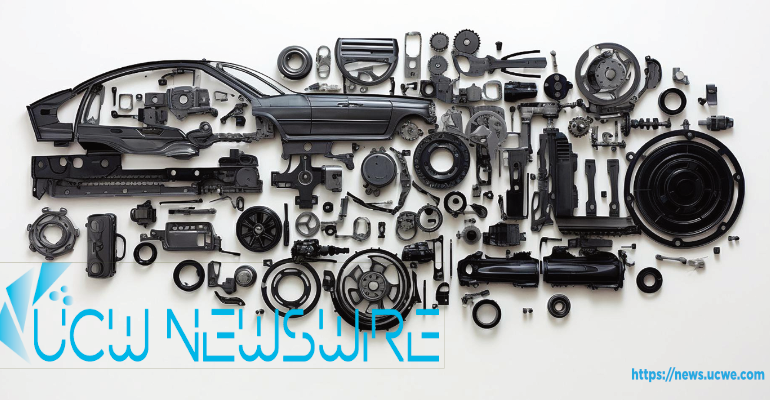The Impact of New U.S. Tariffs on OEM and Aftermarket Auto Manufacturing
The automotive industry in the United States stands at a crossroads as new tariffs are set to hit Original Equipment Manufacturers (OEMs) and Aftermarket manufacturers with substantial implications. Many of

The automotive industry in the United States stands at a crossroads as new tariffs are set to hit Original Equipment Manufacturers (OEMs) and Aftermarket manufacturers with substantial implications. Many of these manufacturers currently rely on Asian countries, particularly China and South Korea, for critical components and materials. However, as U.S. tariffs on Asian imports come into play, companies will be forced to re-evaluate their supply chains, with consequences that may reshape the industry for years to come.
Heavy Reliance on Asian Imports
For decades, U.S. automakers have leaned on Asian suppliers for parts ranging from electronics and sensors to powertrains and semiconductors. The efficiency and cost-effectiveness of sourcing from countries like China and South Korea have kept prices competitive and ensured a steady supply of components for both OEMs and aftermarket manufacturers. However, with the looming threat of new tariffs, which may increase the cost of these imports, the longstanding benefits of this arrangement are at risk.
The introduction of tariffs could have a ripple effect across the entire supply chain. For instance, after-market manufacturers who source parts such as exhaust systems, brake pads, and suspension components from Asian suppliers may suddenly face steep price hikes.
The result? Higher costs for consumers and a potential increase in the overall price of vehicles.
Increased tariffs would likely result in immediate cost increases for manufacturers. Asian-made components that were once affordable and efficient to import will become significantly more expensive, forcing OEMs and aftermarket companies to either absorb the extra costs or pass them on to consumers. Given the competitive nature of the automotive market, passing on higher costs may not be an attractive option, as consumers are sensitive to price changes.
Moreover, manufacturers relying on just-in-time inventory models—where parts are delivered and used almost immediately after arrival—may experience disruptions. Tariffs may also lead to delays in production schedules, with higher costs and longer lead times for essential parts.
A Spark for U.S.-Based Manufacturing
While these challenges are daunting, the silver lining could be a renewed push for onshore manufacturing. In fact, this may very well be the underlying goal of the new tariff policies. As the costs of overseas production soar due to tariffs, companies may be incentivized to bring production back to U.S. shores or to establish new manufacturing partnerships with North American suppliers. This shift could lead to a much-needed revitalization of domestic manufacturing in the auto industry.
Historically, the U.S. automotive sector has had an advantage when it comes to scale and technology, and the tariffs could help tap into this by fostering a more robust domestic manufacturing base. Additionally, local production helps mitigate the risks associated with international supply chains, especially in the face of ongoing global disruptions.
The move towards reshoring may also stimulate innovation in automated and robotics-driven manufacturing processes, making U.S. based factories more competitive. It could also lead to a new wave of specialized suppliers closer to home, providing a wider range of high-quality components for U.S. based OEMs and aftermarket companies.
Beyond the immediate impact of higher manufacturing costs, the drive towards reshoring could offer long-term economic benefits. Increased domestic production could create jobs, boost local economies, and enhance the United States’ competitive position in global markets. As the auto industry shifts towards electric and autonomous vehicles, having production capabilities in-house or nearby could become even more critical.
Moreover, this shift may create a more balanced trade landscape. Reducing the reliance on foreign imports, particularly from countries like China, could improve the U.S. trade deficit and foster more equitable international trade relationships.
Is This a New Era for U.S. Auto Manufacturing?
The impending tariffs on imports from Asia present a serious challenge for the U.S. automotive industry. Manufacturers, both OEMs and aftermarket companies, are likely to face increased costs, supply chain disruptions, and greater pressure to adapt to the new trade landscape. However, this pressure may ultimately serve as a catalyst for a renaissance of U.S.-based manufacturing, encouraging companies to bring jobs and production back to American soil.
In the long run, reshoring could not only mitigate the immediate impacts of tariffs but also usher in a more resilient, competitive, and innovative U.S. auto industry. While the road ahead may be bumpy, it’s clear that U.S. manufacturers will need to adapt quickly or risk being left behind in a rapidly evolving global market.
Richard Wells
UCW Newswire

